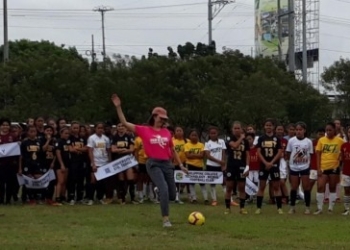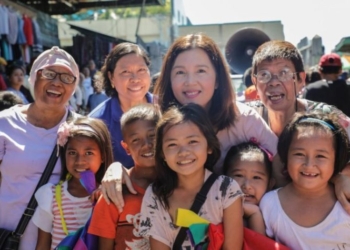Former House Speaker Alan Peter Cayetano on Thursday made the pitch to presidential candidates to unite around a single five-year plan for targeted government spending to improve access to basic services and state assistance programs.
“Maraming issues na hindi magkakasundo, pero dapat united y’ung purpose,” Cayetano said at a press conference on April 7, 2022.
He reiterated an earlier statement urging presidential candidates to work together to craft a five-year plan that can be implemented by the one who wins the May elections.
“Let’s come up with a comprehensive and doable plan. Babalikan ko lang y’ung proposal ko last year, na magsama-sama lahat ng mga presidentiable… na magkaroon ng plano para hindi na mag-away-away,” he added.
For his part, Cayetano said the next administration could adopt a P5-trillion national budget annually from 2023 through 2027, with spending programs that span all five of those years and not just made on a year-to-year basis.
This, he said, should follow the “Relief-Recovery-Reform” framework implemented by United States President Franklin D. Roosevelt, who instituted the New Deal state spending program to help that country emerge from the economic devastation brought about by The Great Depression of the 1930s.
“In times of crisis, how do we begin to recover? Sabi ko nga, let’s not reinvent the wheel. There’s no problem po in looking at models or y’ung mga successful, best practices,” Cayetano said.
Relief, Recovery
As part of the “Relief” aspect of the framework, Cayetano pointed out the need to streamline the process by which people can access social aid and safety net programs that are already being implemented.
He suggested leveraging the national ID system to grant people seamless access to multiple welfare grants, and using electronic payment systems to distribute the money instead of coursing it through politicians.
“May pondo; ang problema po sa ngayon, mahirap makakuha kung walang padrino. You have to go to your mayor or congressman or woman or your senator para makuha,” Cayetano said.
Programs under the “Recovery” aspect of Cayetano’s proposal include livelihood aid grants given by the Department of Social Welfare and Development (DSWD) and Department of Trade and Industry, as well as the small-loans facility provided by the government to micro, small and medium enterprises (MSMEs).
An alternative program that can also be implemented, according to Cayetano, is the Aggressive and Targeted Access to Capital Loan and Assistance Program, which features a one-year grace period for payments and generous payment terms of up to 10 years at low interest rates. These will be made easier to access than current aid programs for MSMEs, he said.
The former Speaker emphasized the importance of focusing on MSMEs to drive economic recovery as this in turn will improve employment opportunities and widen the tax base for the government.
“Around 60 percent ng employment sa Pilipinas ay nasa small, micro, and medium enterprise. So ibig sabihin, kapag binuhay mo ‘yan, mas magkakatrabaho ang tao, at kapag may trabaho ang tao at buhay ang negosyo, may buwis,” he said.
Reform
Finally, the “Reform” aspect of Cayetano’s proposal involves improvements in digital infrastructure as well as in agricultural and tourism infrastructure.
According to the former Speaker, all Filipinos must have access to water, electricity, and fast internet connectivity so they can fully participate in the digital economy.
This, in turn, will distribute economic activity more evenly between urban and rural areas of the country.
“If every square inch of Philippine territory has water, electricity, and internet, then hindi magsisiksikan sa siyudad, at mag-go-grow ang ating ekonomiya,” Cayetano said.
Recalling the experience of Thailand, Cayetano pointed out that the Thai government made improvements to food security and agriculture as well as access to cheap medicines and health facilities, and this became the basis for a broader improvement in the quality of life and economic opportunities for its people.
He also mentioned that Thailand and other neighboring countries such as Malaysia and Vietnam have improved their infrastructure specifically with tourism in mind, and this could also be an area of focus for the next five years as every two foreign tourist arrivals generate one Filipino job in the tourism sector.
“These are examples of reforms that were done in other countries, and why not do it now? By creating the right environment for jobs at y’ung tamang kita at y’ung magandang trabaho para y’ung presyo abot-kaya, it will also take out Filipinos from desperation,” Cayetano said.






